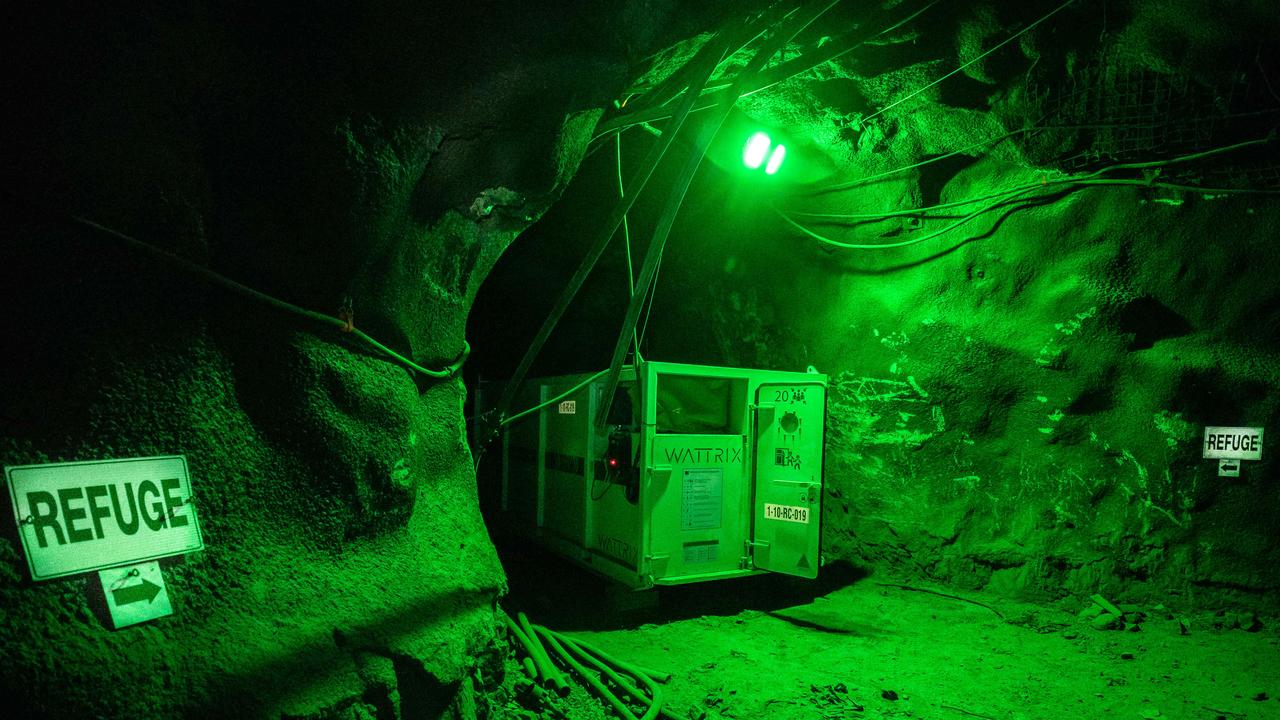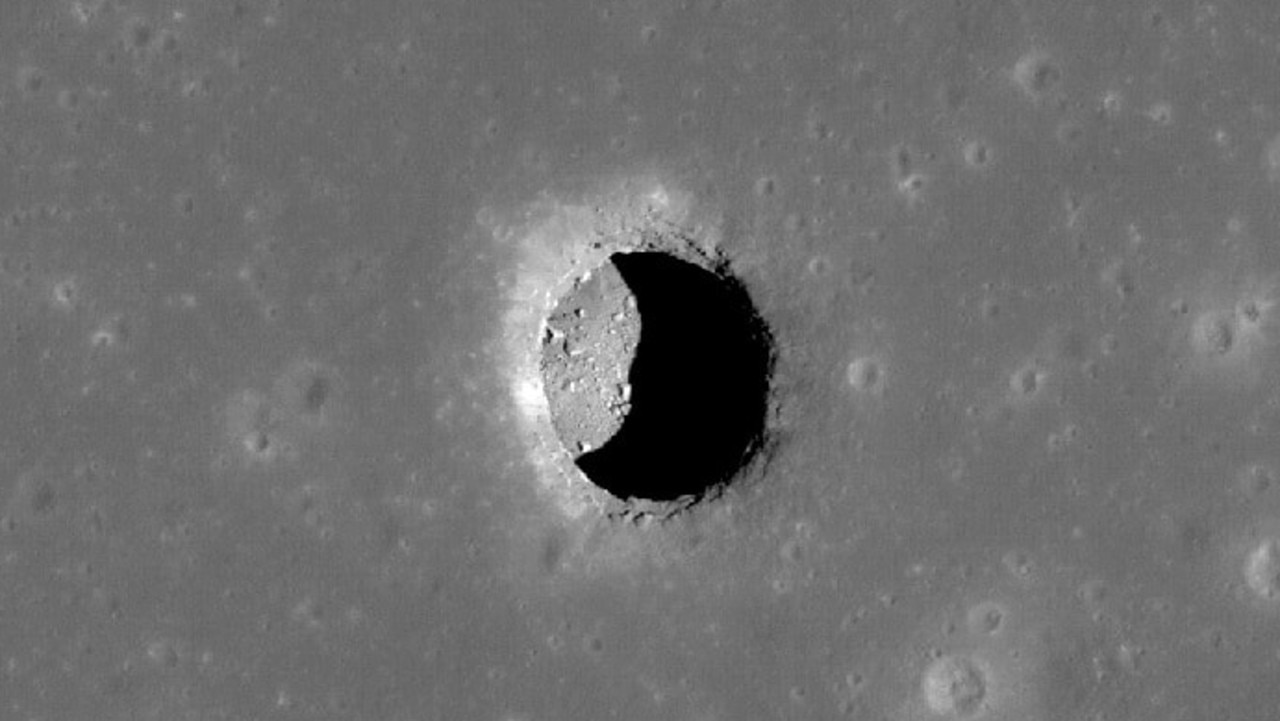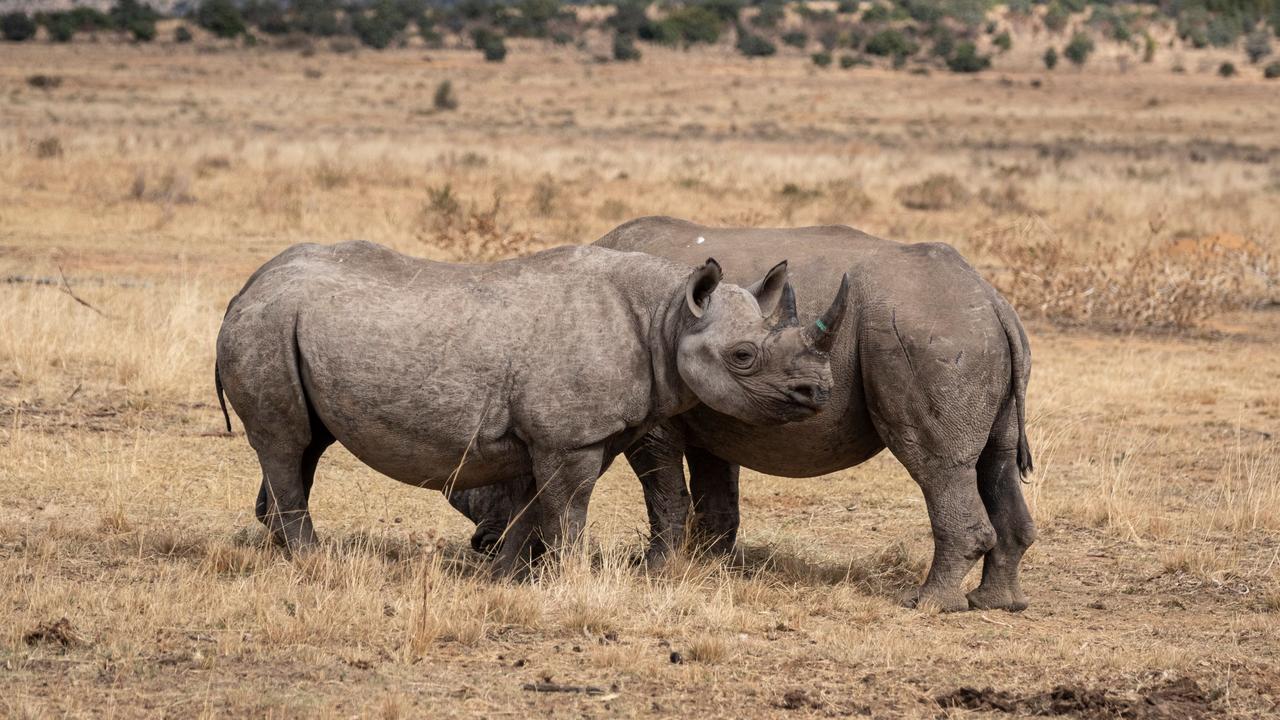Lab for testing dark matter theory buried beneath Vic mining town
The mystery of dark matter may be solved deep underground Down Under, as a team of Aussie physicists joins the global race to prove an astroparticle exists that is expanding the universe

READING LEVEL: GREEN
A kilometre beneath the Victorian country town of Stawell, in the depths of a working gold mine, a hi-tech laboratory is seeking to solve a universal mystery – proof-positive* of the existence of dark matter.
The Stawell Underground Physics Laboratory is a first in the southern hemisphere, marking an exciting development in the global search for dark matter, an astroparticle* scientists believe makes up 80-85 per cent of the mass of the entire universe.

Beneath 1026m of rock, towards the end of a 15km corkscrew* drive shaft, and well beyond the 19th-century gold diggings, is dark matter detection equipment, known as SABRE South crystal sensors, encased* in copper tubes and solvent*, and surrounded by 200 tonnes of 10cm thick steel.
The underground lab at the 150-year-old Stawell Gold Mine in western Victoria, walled and roofed in reinforced shotcrete*, filters out environmental radiation* – to a million times less than surface levels – that could interfere with the SABRE reading.

Specifically, scientists are looking for WIMPs (weakly interacting massive particles), a likely form of dark matter.
“It’s one of the deepest mines in Australia and we don’t want cosmic radiation disturbing our experiments,” University of Melbourne Professor Elisabetta Barberio said.
Ordinary matter – everything that can be seen or felt – makes up only 4 per cent of the universe and the remainder consists of dark matter, which is believed to hold galaxies* in shape, and dark energy, which allows the expansion of the universe.

The existence of dark matter, which passes through everything including people and planets, is inferred* from the way galaxies rotate and the gravitational* bending of light.
Within the deep-mine lab, the SABRE sodium iodide* crystals will emit a flash of light if a dark matter particle hits the nucleus* of an atom*.
The lab’s instrument readings, to be taken over the next two years, will be compared with those from a northern hemisphere SABRE facility in Italy to confirm detections.

Professor Barberio said if the Stawell research succeeded it would be a scientific achievement on the scale of the 2011 discovery of the Higgs boson*, popularly known as the God particle, and an elementary aspect of physics that could unlock new understanding of how the universe was formed.
“We know there is much more matter in the universe than we can see,” Professor Barberio said.
“With the Stawell Underground Physics Laboratory, we have the tools and location to detect this dark matter. Proving the existence of dark matter will help us understand its nature and forever change how we see the universe.”

Due to its location beyond most radiation and atmospheric contaminants*, SUPL is also designed to host future quantum* computing, biological* and cellular* research proposals. Federal and state governments provided $5m each to build SUPL and the Australian Research Council granted $35m for a Centre of Excellence for Dark Matter Particle Physics.
GLOSSARY
- proof-positive: factual, no longer in doubt, proven
- astroparticle: cosmic or universal particle smaller than an atom (subatomic)
- corkscrew: spiral-shaped, winding, a course, road or passage that repeatedly curves
- encased: covered, completely surrounded
- solvent: a liquid capable of or used for dissolving something
- shotcrete: sprayed concrete
- radiation: energy or particles from a source that travel through space or other mediums
- galaxies: huge collections of gas, dust, and billions of stars and their solar systems
- inferred: an opinion or conclusion reached from available information or facts
- gravitational: area around a large object, such as a planet, where gravity has an effect
- sodium iodide: colourless or white, crystalline, water-soluble solid, NaI
- nucleus: usually round part of most cells, enclosed in a double membrane, controls cell activity and contains the chromosomes
- atom: smallest unit of any chemical element, with a positive nucleus surrounded by negative electrons
- Higgs boson: fundamental particle associated with the Higgs field, that gives mass to other fundamental particles such as electrons
- contaminants: substance that pollutes, spoils, or poisons something
- quantum: smallest amount or unit of something, especially energy
- biological: relating to life and living processes
- cellular: relating to, resembling, or composed of a cell or cells
EXTRA READING
Webb telescope snaps stunning Jupiter
Earth spinning faster than ever before
Cartwheel Galaxy snaps have space fans in a spin
QUICK QUIZ
- Physicists believe dark matter makes up what percentage of the mass of the universe?
- How many tonnes of steel at what thickness surround the SABRE South crystal sensors?
- What are WIMPs?
- What will the SABRE crystals do?
- What will the lab’s readings be compared to?
LISTEN TO THIS STORY
CLASSROOM ACTIVITIES
1. Job description
Imagine that you are one of the scientists working from the Stawell Underground Physics Laboratory. You meet somebody new at a party and they ask you about your job. Write down what you would say to them, to explain what you do.
Time: allow 15 minutes to complete this activity
Curriculum Links: English; Science
2. Extension
What was the most interesting new thing you learnt from reading this news story?
What is one question that it made you wish you knew the answer to?
Time: allow 10 minutes to complete this activity
Curriculum Links: English; Science
VCOP ACTIVITY
Wow word recycle
There are plenty of wow words (ambitious pieces of vocabulary) being used in the article. Some are in the glossary, but there might be extra ones from the article that you think are exceptional as well.
Identify all the words in the article that you think are not common words, and particularly good choices for the writer to have chosen.
Select three words you have highlighted to recycle into your own sentences.
If any of the words you identified are not in the glossary, write up your own glossary for them.

